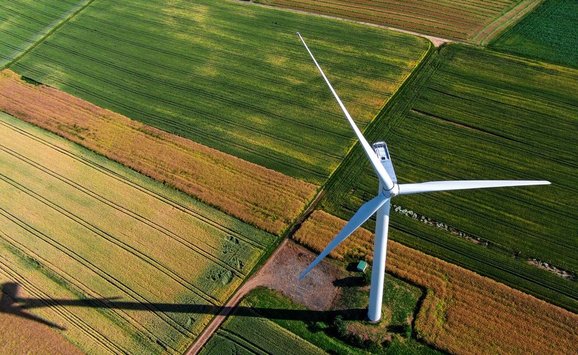Between wheat and meat, raisins and rice, soybeans and fowl, oil and gas, propane and ethylene, lumber and newsprint, cotton and synthetics, trains and planes, and the many other items showing up in the daily headlines but not on market shelves, a demand-supply gap seemed to develop for just about everything in 1973. Abundance appeared limited to new shocks, shortfalls, reshufflings, and surprises. Prices, not excluding those of money and securities, seemed constantly to be on either a rocket or a roller-coaster. A seemingly endless train of reverses psychologically overshadowed even major political and economic successes. Judged by the usual standards, the economy had prospered; peace of a sort had replaced polemic and parlousness, both internationally and domestically; and outer space had seen new conquests. It should have been a good year, but it may be remembered best for its scandals and its shortages.
How much of the shortage situation was real and persistent, how much contrived and fleeting? In the atmosphere of 1973, full of solid annoyance and some mistress—but still not much actual hardship—events seemed continually to nurture a cynicism ready to regard all production failure or resource shortage as artificial, maneuvered, or capable of being dissipated by proper public exposure. More than anything else, 'it was probably the empty gasoline pump which first instilled a general realization of the underlying reality.
There has been a lively and parallel debate about the roots of the problem. The "short-term" school believes we are in a transition period, and that in a matter of a decade or so new solutions will have emerged. The "long-term" school questions the efficiency of any solutions other than such as will involve fundamental changes in what has come to be called "life styles"—a term vague enough to encompass anything from owning a smaller car or turning the lights off when leaving a room to living in communes, eating or growing organic food, or issuing licenses for having children.
Both schools of thought would agree, however, that to make progress we need to work on both the demand and the supply side of the street—by offering appropriate incentives, by institutional inventiveness, by regulation, by exhortation, by education, by example setting. But in such undertakings we are severely handicapped by our inordinate fear of letting some of this be accomplished through the play of prices. Even the suggestion of such a remedy seems distasteful, marking the advocate as insensitive to the fact that the price system works both imperfectly and inequitably. Price increases, especially of basic things like food and energy, are indeed the worst form of regressive taxation. But that recognition need not lead us to lock away completely one of the best mechanisms we have for those occasions when at prevailing prices demand and supply do not tend toward a balance.
Fear of working an inequity on the poor while rewarding the rich with windfall profits makes us look at price increases as if they were the work of the devil and turns us toward ever more complex, confusing, and sometimes counterproductive schemes of price control, standard setting, and supply management. Eighty-cent gasoline or fifty-cent bread is not to be countenanced: the poor would get poorer, the rich richer. But what if we were to tackle the distributive problem directly rather than through item-by-item price and supply control? Suppose special allowances were made on a steeply graduated scale to compensate the low-income earners for the price increases with funds to be drawn from an equally graduated special tax on higher incomes? With a dampening of their effect due to such an income supplement at the bottom of the scale, prices could then be allowed to exert their functions to reduce demand and increase supply of scarce items without anyone's having to feel guilty about it.
It thus may well be that a major contribution to the solution of current shortage problems could be made by long overdue moves in the field of income redistribution, including the welfare system and taxation. Not only in ecology, as Barry Commoner likes to point out, but also in economics, everything is connected to everything else. The trick is (1) to find out which strings are most efficiently pulled to get the other parts moving and (2) to look at both sides of the consumption package. It is just possible that a society dealing in novel ways with inequalities will have a better chance of coping with scarcities in traditional ways.

Wheat at five dollars a bushel and soybeans at ten have been especially traumatic experiences for Americans. The price peaks of early fall have receded but the anxieties engendered by them have persisted. Once again, there is an upwelling of Malthusian concern: is this the beginning of the crunch? Is the world bumping along a ceiling on food output that has only little "give" in it? Or are we merely experiencing a compounding of quite disparate events that have temporarily led to the disappearance of adequate stocks and to steeply rising prices?
Both cases can be bolstered with a set of persuasive arguments. Those who argue the "temporary difficulty" case point to unfavorable weather conditions in much of the cereal-growing world, not excluding the United States; to the enormous shortfall in the Peruvian anchovy industry and thus an extraordinary demand pressure on substitutes, particularly soybeans; to the massive grain purchases by the Russians and, only to a somewhat smaller degree, those by the Chinese; to the spreading rise in per capita meat consumption, which, while not a wholly new phenomenon, put an extra dimension in 1972-73 on an already tight feed-grain market. They point, moreover, to the distortion and magnification of reality caused by these factors. To these elements one must add, as being of special significance for the United States: (1) the relative cheapening of U.S. products through dollar devaluation and thus their added attractiveness to foreign buyers, and (2) the disrupting effects of the different price-control phases that upset relations among producers, distributors, and retailers sufficiently to produce physical shortages on market shelves.
Those who believe our troubles stem from more profound and persistent causes point to the same manifestations but interpret them differently and marshal additional arguments. For instance, they see in the Peruvian anchovy dearth evidence of long-term overfishing, and consider the situation a true resource/environment crisis rather than one more "temporary difficulty." They point to the slowdown in yield increases from high-response cereal strains, and to some severe episodes of blights, such as has occurred in the Philippines, as signs that the promise of the Green Revolution as a solution to the food problem of the less developed countries (LDCs) may be illusory and that (as they had warned) the pursuit of monocultures comports great new dangers. There are observers who claim to have detected a secular change in weather and rainfall patterns adversely affecting agriculture, in which the Sub-Saharan drought is only one exhibit. They point to the limits to fertilizer application set by water quality maintenance, and thus expect more slowly rising yields in the developed countries on which, in the short run, one would depend for added output.
On a worldwide basis, neither of the two lists of arguments is wholly persuasive, though both contain elements to be taken seriously. A narrowing of the focus to encompass only the prospects for the United States suggests that a temporary concatenation of circumstances may explain most if not all that has happened in 1973.
This view, of course, is easy to overstress. The Russian grain sale, in particular—and the role of the government in it—has been singled out as the villain of the piece. This, it has been asserted, cleaned our grain bins and triggered the price boosts. This interpretation rests on the unspoken assumption, that at the then somewhat higher world price the Russians would not have bought as much. However, given Russian needs and the inability of any other country to coal forward as a supplier, that assumption appears unsound, though one may legitimately castigate the government for lack of insight foresight regarding the price they allowed to be charged and the relative shares of the deal flowing to farmers and dealers. And, of course, if such large demands were to repeat themselves with sufficient frequency, a real policy question would arise regarding the government's responsibility to protect consumers from drastically higher prices by limiting exports, a responsibility to be reconciled with the need for export earnings to safeguard the balance of payments. In that sense the world's appetite for U.S. farm products does pose new policy issues.
The experience of 1973 also brought to the fore the difficulties in maintaining the postwar rate of growth in per capita meat consumption. When the full-year statistics become available, they will almost certainly show the first real break in that long upward trend, especially as it pertains to beef. Whether the American consumer has been jolted enough to permanently change the slope of the graph one cannot tell. But it is possible that some plateau has been reached sooner than it might have been without the dramatic events of 1973.
As for production, 1973 harvests look large, both in comparison with 1972 and on a longer-run curve; and that is generally true around the world. But inventories have been so depleted that continuing high demand will allow at best a modest restocking. Thus, the idea of building up reserves against another year or period of shortage, which has been actively pursued above all by FAO, comes at a time when even at high costs of acquisition there would be little to buy. And there is always the possibility that short-term complacency will once more take over should matters ease up later in the decade.

What in fact are the prospects for easing of the present supply stringency, both for the United States and for the world? How close are we to any long-run limits to expansion of agricultural output?
For the past twenty-five years or more, agricultural specialists and consumers alike have been complacent about the ability of U.S. agriculture to respond to demand. A natural assumption was that output would continue to rise in the future as it had in the past. Now, confronted with a tightening food supply situation, many observers have begun to wonder if agricultural output can continue to respond in adequate measure.
Typically, a reasonable case can be for both viewpoints—that total agricultural output will, or will not, rise as fast as domestic and export markets place new demands on it. On the positive side: Past agriculture research has been largely responsible for increased output, and further increases in output are almost certain to flow from the research already accomplished. Agricultural research continues, and new discoveries and new techniques will have further output-increasing effects over the longer run. Some land was returned to crop production in 1973, more will be returned to that use in 1974, and still more land could be cleared, drained, irrigated, terraced, or otherwise brought into production if the need were great enough—generally poorer land, and at higher costs, but still with considerable productivity. On the negative side: Environmental constraints will surely reduce the use of chemicals of many kinds, affect disposal of agricultural wastes, and in other ways reduce agricultural output or inhibit increases in it. Fossil-fuel energy will be more costly and may also be scarcer for the farmer, the supplier of agricultural inputs, and the marketer of agricultural commodities. And past research has in some cases brought commercial farm output close to a biologic ceiling—for example, in respect to number of eggs laid annually per hen.

Curiously, in the booming export demand for agricultural commodities, especially from nations not particularly friendly to America in the recent past, and in the pinching oil import stringency imposed by nations suddenly aware of their economic strength, there has not yet arisen in the United States any loud cry for the use of food as an international political weapon. But the possibility of a more aggressive food export program remains. Larger food exports would certainly help to rebuild the surplus in the U.S. trade balance. This and the accepted importance of rebuilding world food reserves suggest erring on the side of larger rather than smaller production goals, even at the expense of increasing marginal costs and the possibility of having once again to deal with surpluses by means of domestic price subsidy.
In any case, the United States, as a major trading partner in the world agricultural economy, is certain in one way or another to affect and be affected by longer-term supply and demand currents originating abroad. Circumstances in the LDCs may be particularly critical. As already noted, sharp questions are beginning to be asked about the Green Revolution as the ultimate answer to LDC food supply problems. Effective deployment of the new technology requires a measure of water control and the use of fertilizers and pesticides on a scale beyond the reach of most small farmers. Moreover, traditional institutions in the LDCs are not well structured to supply these farmers with the credit, technical assistance, and marketing information they must have if they are to share in the gains of this revolution. There is much evidence that the major part of the gains achieved so far has been reaped by a relatively small number of large farmers who not only command substantial resources of their own but also have access to the various forms of institutional assistance not readily available to the small farmer.
The further spread of the Green Revolution in the LDCs thus confronts two related obstacles, one based on the inherent difficulty of transferring a complex new technology to millions of small farmers in areas where institutional forms are geared to traditional practices, the other reflecting the social unrest likely to result under these circumstances from the inequitable distribution of the revolution's gains. These inequities already have led to violence in some rural areas of India.
No one is yet writing off the Green Revolution as a failed panacea. Real gains in production from increased output per acre due to the spread of high-response strains are firmly on the record books. But fulfillment of its promise will require the solution of problems in social engineering far more difficult than those faced by the scientists who planted the seeds from which the revolution sprang. The answer to the question of whether the world's recent experience of skyrocketing food prices represents a passing phase or a bleak new period of permanent scarcity may hinge in large measure on the capacity of the LDCs to solve those problems. In the meantime, the demand that the "food problem” be perceived and treated as one that calls for world-wide cooperation, rather than bilateralism or merely a need for internal adjustments in the traditionally surplus countries, will grow, confronting the United States with new issues touching the proper role of its highly productive agricultural facilities.





